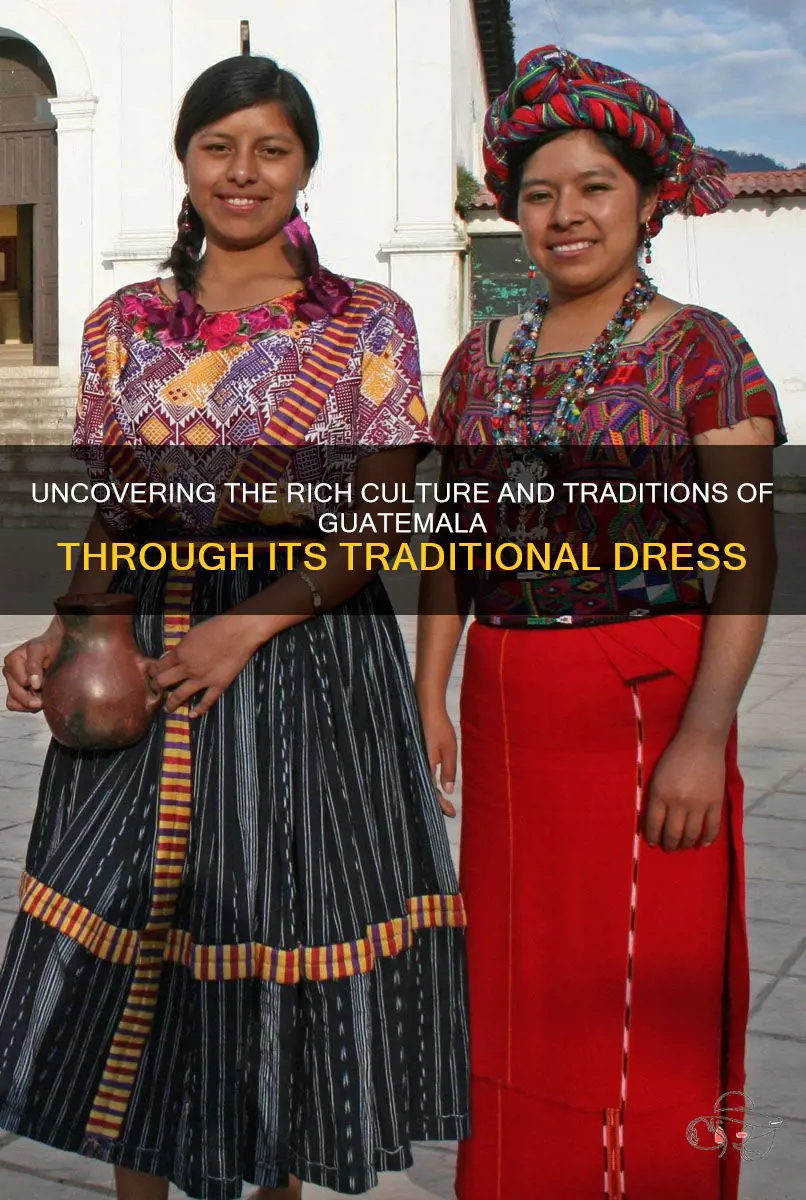
Guatemala, a vibrant and culturally rich country in Central America, is known for its stunning traditional clothing. The traditional dress, or traje, in Guatemala is not just a fashion statement but also a window into the country's rich history, diverse indigenous communities, and deep-rooted cultural heritage. Through the intricate designs, vibrant colors, and unique textiles of the traditional dress, one can gather insight into the wearer's region, ethnicity, social status, and even their personal story. Let's dive into the fascinating world of Guatemalan dress and uncover the hidden meanings and stories behind each garment.
| Characteristics | Values |
|---|---|
| Ethnicity | Mayan, Garifuna, Ladino |
| Region | Western Highlands, Eastern Highlands, Pacific Coast |
| Traditional Clothing | Huipil (blouse), Corte (skirt), Tzute (headscarf) |
| Color | Vibrant colors and patterns |
| Symbolism | Represents Mayan cultural heritage |
| Identity | Indicates person's origin, marital status, and rank |
| Status | Traditional dress worn for special occasions |
| Modern Adaptations | Combination of traditional and modern clothing |
| Economic Impact | Handmade clothing supports local artisans |
| Cultural Preservation | Preserves Mayan traditions and identity |
| Gender Differentiation | Men and women have different styles of clothing |
| Regional Variation | Clothing styles vary by region in Guatemala |
What You'll Learn

Traditional Guatemalan Clothing: Representation of Indigenous Culture
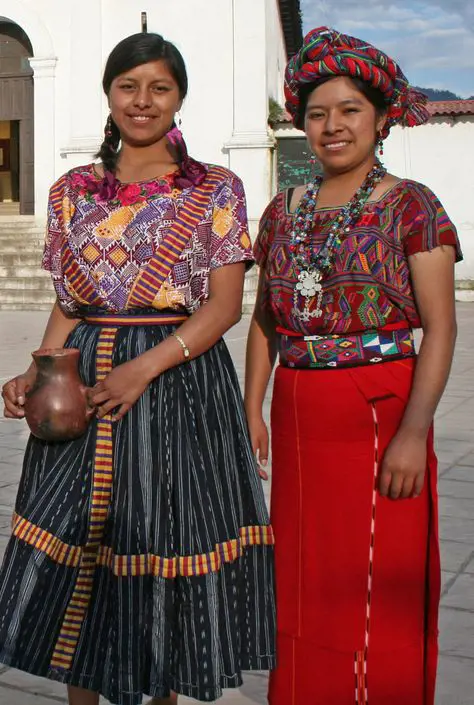
Guatemala is known for its rich indigenous heritage, which is beautifully represented through traditional clothing worn by its people. These colorful and intricately designed garments hold deep cultural significance and are a source of pride for Guatemalans. From vibrant huipils to intricate cortes, these traditional garments tell a story of tradition, identity, and community.
One of the most iconic pieces of Guatemalan clothing is the huipil. Huipils are traditional blouses typically worn by indigenous women. They are beautifully embroidered with ornate designs that vary from region to region. The designs often incorporate elements of nature, such as flowers, animals, and geometric patterns, which hold symbolic meaning to the community. Huipils are not only a form of personal expression but also a representation of a woman's cultural heritage and identity.
Cortes, on the other hand, are traditional wrap-around skirts worn by both men and women in Guatemala. These skirts are often made from brightly colored woven fabric and feature intricate patterns and designs. Each region has its unique style of corte, with different color combinations, weaving techniques, and patterns. Cortes not only serve as a practical garment but also carry cultural and social significance. They are an important part of traditional celebrations and ceremonies and can indicate a person's social status and identity.
Mayan textiles are another essential element of Guatemalan traditional clothing. These textiles are characterized by their vibrant colors, intricate weaves, and incorporation of ancient Mayan symbols and patterns. Mayan women are skilled weavers who pass down their techniques and designs from generation to generation. These textiles are used to create various garments, including blouses, skirts, belts, and shawls, each representing a different aspect of Mayan cultural identity.
In addition to clothing, Guatemalan accessories also play a significant role in representing indigenous culture. For example, jade jewelry is highly valued and symbolizes wealth and power in Mayan culture. Jade pendants, earrings, and bracelets are often worn as a symbol of cultural pride and heritage.
The traditional clothing of Guatemala represents much more than just fashion. It serves as a visual language that conveys stories of identity, community, and a deep connection to the land. By preserving and continuing the tradition of wearing traditional garments, Guatemalans celebrate their indigenous heritage and honor their ancestors. As a visitor to Guatemala, it is essential to respect and appreciate the cultural significance of these garments and understand the stories they tell.
Henley Dexter Wears: The Latest Fashion Trends from the Stylish Icon
You may want to see also

Socioeconomic Status: Identifying Wealth or Poverty through Dress
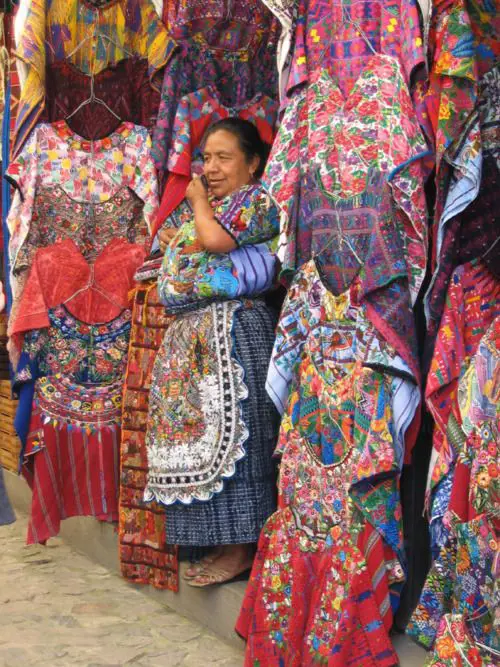
Guatemala is a country that has a rich cultural heritage, and one of the ways that this heritage is expressed is through traditional dress. The traditional clothing of Guatemala varies from region to region, and it is often a reflection of the wearer's socioeconomic status. By paying attention to the details of the dress, it is possible to gain valuable insights into the wealth or poverty of an individual or a community.
One of the main elements to look for when trying to identify wealth or poverty through dress in Guatemala is the type of fabric used. Wealthier individuals tend to wear clothing made from high-quality materials, such as silk or satin. These fabrics are often imported and can be quite expensive. On the other hand, individuals from lower socioeconomic backgrounds may wear clothing made from cheaper, more readily available materials, such as cotton or polyester.
Another important aspect to consider is the intricacy of the embroidery or weaving on the clothing. Wealthier individuals often have access to skilled artisans who create elaborate designs using fine threads and intricate techniques. This level of detail is often a sign of wealth and prestige. In contrast, individuals from poorer communities may have simpler, less elaborate designs on their clothing, if any at all.
The colors used in traditional Guatemalan dress can also provide insights into socioeconomic status. Wealthier individuals often wear clothing with bright, vibrant colors. These colors can be more expensive to produce, as they require more dye and pigment. On the other hand, individuals from lower socioeconomic backgrounds may wear clothing with more muted, earthy tones or even black and white, which are typically less costly to produce.
In addition to the fabric, embroidery, and colors, the style of the clothing can also indicate wealth or poverty. Wealthier individuals may wear clothing with more layers, ruffles, or pleats, which require more fabric and skilled tailoring. They may also wear accessories such as belts, hats, or jewelry, which can further enhance their status. Individuals from lower socioeconomic backgrounds, on the other hand, often wear simpler, more modest clothing styles, with fewer layers and less adornment.
It is important to note that while these generalizations can provide some insights, they are not absolute indicators of wealth or poverty. Clothing choices can be influenced by many factors, including personal preference, cultural norms, and access to resources. Furthermore, Guatemala is a diverse country, and there can be significant variation within different communities and regions.
In conclusion, paying attention to the details of traditional dress in Guatemala can give valuable insights into the socioeconomic status of individuals and communities. By considering factors such as the type of fabric, the intricacy of embroidery or weaving, the colors used, and the style of the clothing, it is possible to gain a better understanding of the wealth or poverty of the wearers. However, it is important to remember that these indicators are not definitive and should be considered in the context of the broader cultural and social context.
Fashion Tips: Stylish Pairings for Women's Blue Jeans
You may want to see also

Occupational Identity: Recognizing a Guatemalan's Job or Trade
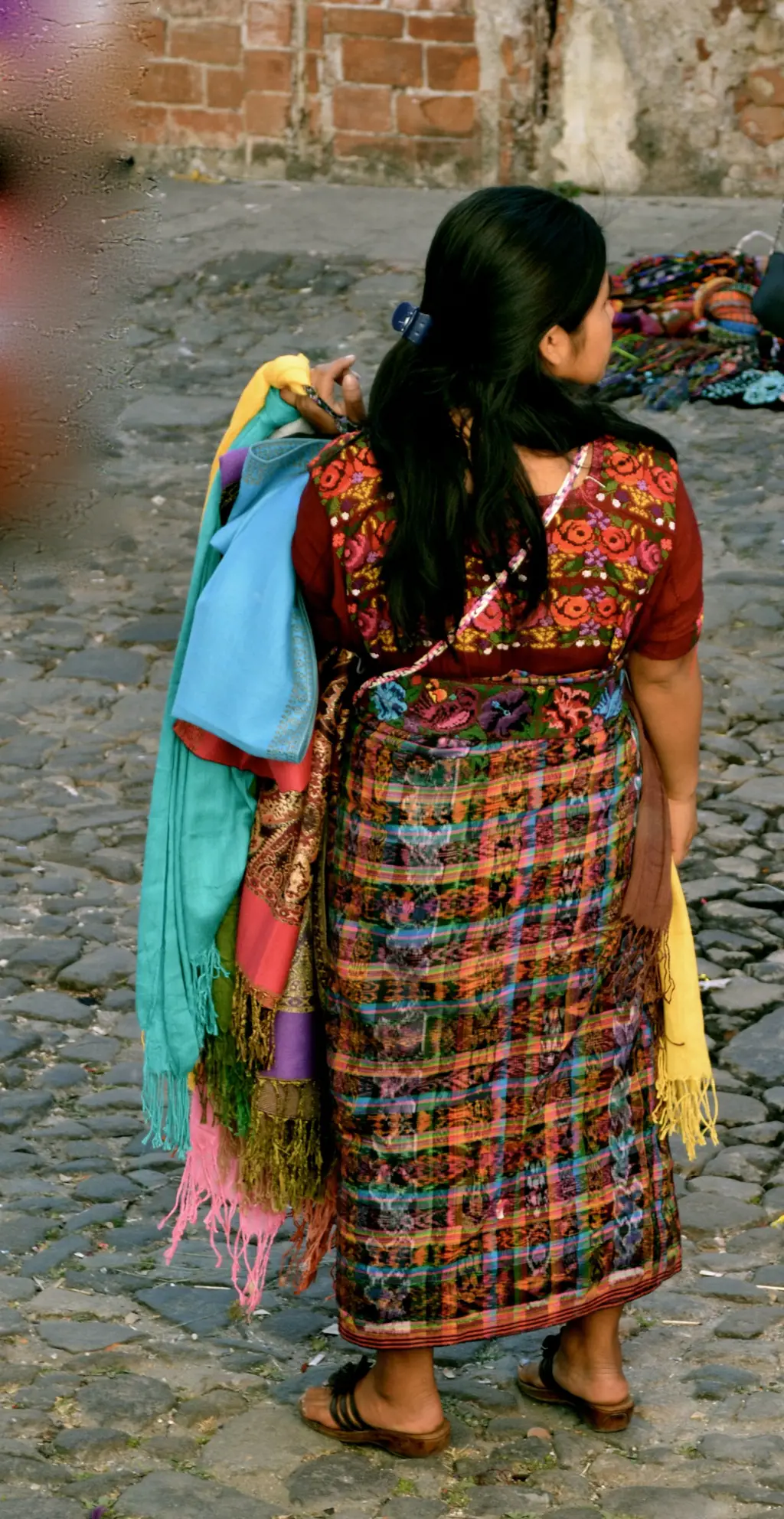
Guatemala is a country with a rich cultural heritage, and one of the aspects that stands out is the traditional dress worn by its people. The traditional dress, also known as "traje," is not just a fashion statement, but it is also a reflection of the wearer's occupation or trade. Each region of Guatemala has its specific dress, and by observing the details of the attire, one can identify a person's occupational identity. Here are a few examples:
Weaver:
In regions such as Sololá and Totonicapán, the traditional dress of weavers is characterized by colorful fabric with intricate designs. The women wear a cotton blouse and skirt, called "corte," which are often adorned with elaborate geometric patterns. They may also wear a woven shawl or "rebozo" and a headpiece called "tocoyal" with bright colors and different patterns. These garments signify their expertise as weavers and their connection to their indigenous heritage.
Farmer:
In rural areas such as Chichicastenango and Quetzaltenango, the traditional dress of farmers is simple and practical. Men usually wear trousers and a shirt, both made of durable fabric such as denim or canvas. They may also wear a wide-brimmed straw hat to protect themselves from the sun while working on the fields. These garments reflect their occupation as farmers and their need for comfortable and protective clothing.
Artisan:
In regions like Antigua and Chichicastenango, where handicrafts are prominent, the traditional dress of artisans often includes elements that showcase their creativity and craftsmanship. Women may wear embroidered blouses with intricate floral designs, along with brightly colored skirts and an embroidered sash known as "faja." Men may wear a shirt with embroidery details, paired with trousers made of striped fabric. These garments symbolize their skill and dedication as artisans.
Fisherman:
In coastal areas like Livingston and Puerto Barrios, the traditional dress of fishermen is influenced by their trade. Men often wear loose-fitting cotton trousers, shirts, and sandals for comfort and mobility. They may also wear a straw hat, similar to those worn by farmers, but with a wider brim to shield their faces from the sun while out at sea. These garments reflect their occupation as fishermen and their close relationship with the ocean.
Market Vendor:
In bustling marketplaces such as Chichicastenango and Antigua, the traditional dress of market vendors is often vibrant and eye-catching. Women may wear intricately embroidered blouses with vivid colors and patterns, paired with a handwoven skirt or "huipil." They may also wear beaded necklaces and earrings as accessories. Men may wear a shirt with subtle embroidery or colorful patterns, along with trousers and a wide belt. These garments signify their role as vendors and their engagement in the bustling marketplace.
It is important to note that the traditional dress in Guatemala is not limited to these occupations alone, but these examples provide a glimpse into how the attire can reflect a person's occupational identity. By observing the details of the dress, such as fabric, patterns, and accessories, one can gain insights into the wearer's profession or trade. The traditional dress is a source of pride for Guatemalans, as it connects them to their cultural roots and symbolizes their societal role.
Perfect Pairings: Stylish Outfits to Wear with a Men's Trench Coat
You may want to see also

Regional Differences: Understanding Local Customs and Traditions through Dress
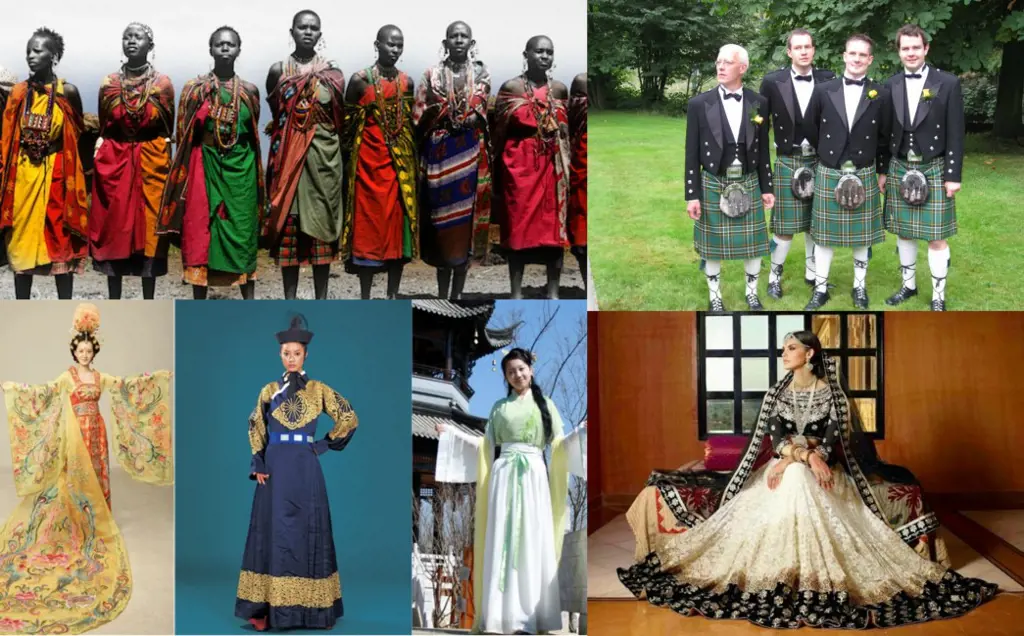
In Guatemala, like in many countries around the world, traditional clothing plays a crucial role in cultural identity and serves as a visual depiction of local customs and traditions. Understanding the nuances of Guatemalan dress can not only enhance your appreciation for the country's rich cultural diversity, but also help you navigate social interactions and avoid unintentional offense. Here are some key things you can learn through the dress in Guatemala:
- Ethnicity and Origin: Guatemala is home to a multitude of indigenous communities, each with its own distinctive attire. By observing the clothing styles, colors, and patterns, you can identify the ethnic group a person belongs to and even determine their place of origin within the country. For example, the Maya K'iche', Maya Kaqchikel, and Maya Mam communities each have their own unique traditional garments.
- Social Status and Hierarchy: In Guatemala, the type and quality of clothing can indicate a person's social status and position within the community. Wealthier individuals may wear more ornate and expensive pieces, while those from lower socioeconomic backgrounds might wear simpler, utilitarian attire. Additionally, certain garments may be reserved for specific occasions or ceremonies, further reflecting social hierarchy.
- Gender Roles and Marital Status: Traditional Guatemalan dress can also provide insights into gender roles and marital status. Women often wear colorful, handwoven blouses called "huipiles," which vary in design according to the wearer's community. These huipiles often incorporate intricate embroidery and symbols that convey messages about womanhood, marital status, and even personal experiences. Similarly, men's attire, such as the "traje," can provide information about their marital status and community affiliation.
- Religious Beliefs and Festivals: Religion plays a significant role in Guatemalan culture, and dress can reveal a person's religious affiliation and participation in various festivals and celebrations. For example, during Holy Week, which precedes Easter, you may notice individuals dressed in purple or black garments as a sign of mourning or solidarity. Similarly, traditional Mayan ceremonies often involve specific attire that reflects the spiritual significance of the event.
- Artistic Expression and Cultural Preservation: Traditional Guatemalan garments are not merely functional pieces of clothing; they are artistic expressions that have been passed down through generations. The textiles are often woven by hand using ancient techniques, and the patterns and motifs hold deep cultural significance. By appreciating and respecting these garments, you contribute to the preservation of Guatemala's cultural heritage and support local artisans who continue to create these beautiful textiles.
As a visitor to Guatemala, it is important to approach traditional dress with respect and cultural sensitivity. Avoid appropriating or treating these garments as mere fashion statements. Instead, engage with locals to learn about the cultural significance and history behind their clothing. By doing so, you will not only gain a deeper understanding of Guatemala's diverse communities but also foster mutual respect and appreciation for their traditions.
What to Wear to a Traditional Quinceanera Celebration
You may want to see also
Frequently asked questions
In Guatemala, you can generally determine a person's social status by their dress. Traditional clothing, such as the huipil, can indicate a person's indigenous heritage and cultural identity, while modern, Western-style clothing is often associated with a higher socioeconomic status.
The dress in Guatemala can reveal a person's cultural background. Indigenous communities often wear traditional clothing that reflects their specific cultural heritage, while people from urban areas tend to dress in more modern, Western-style clothing.
In Guatemala, traditional clothing can often indicate a person's gender. Women typically wear the huipil, a traditional blouse, while men wear a traditional shirt called a guayabera. However, in urban areas, Western-style clothing is more commonly worn regardless of gender.
In Guatemala, the dress can sometimes give clues about a person's occupation. For example, traditional artisans and weavers may wear clothing that reflects their craft, while professionals working in urban areas may dress in more formal attire commonly associated with their occupation.
In Guatemala, traditional clothing can sometimes indicate a person's religious affiliation. For example, traditional Mayan communities may wear clothing with specific symbols or colors tied to their spiritual beliefs. Additionally, some people may choose to dress more conservatively based on their religious beliefs, such as wearing long skirts or covering their hair.



















